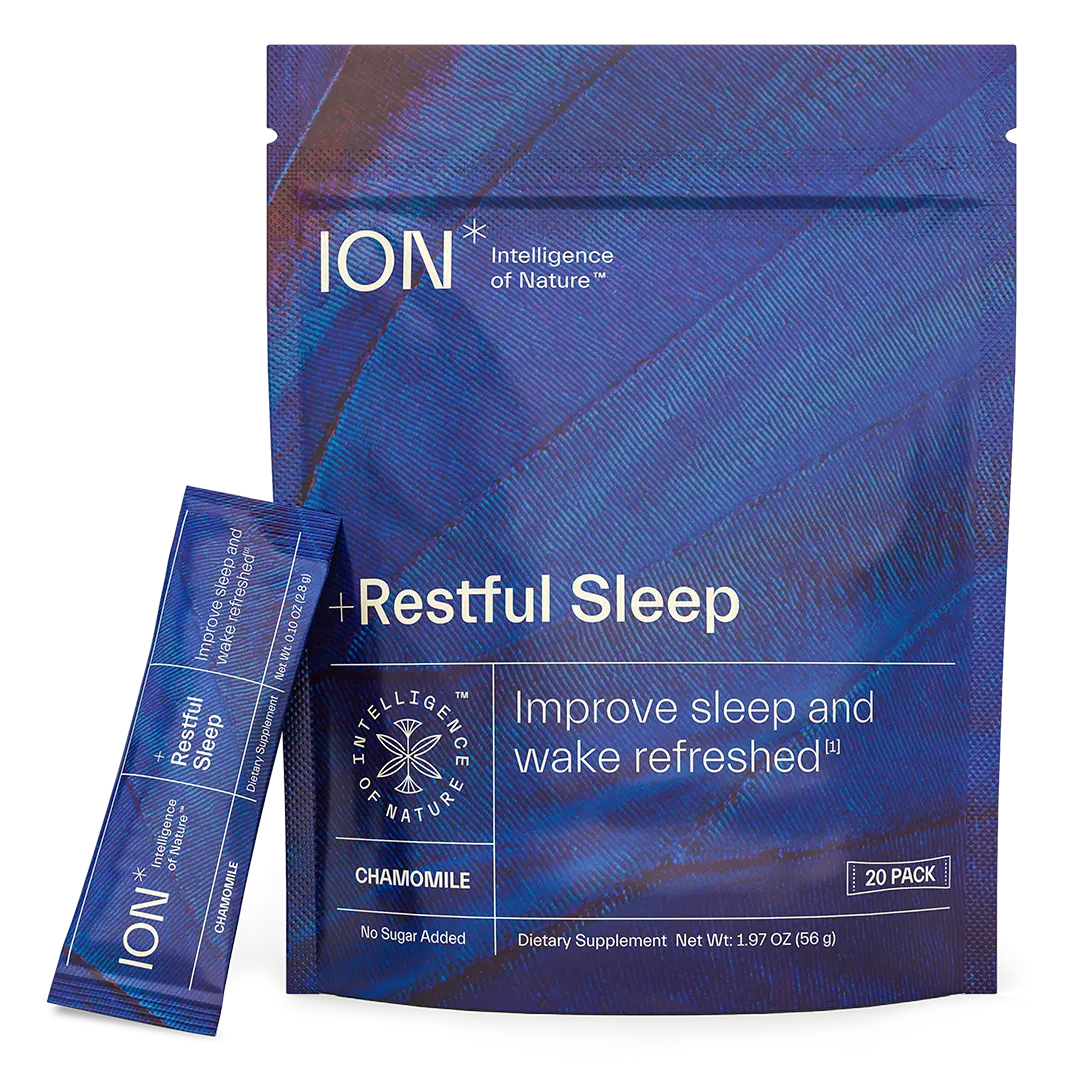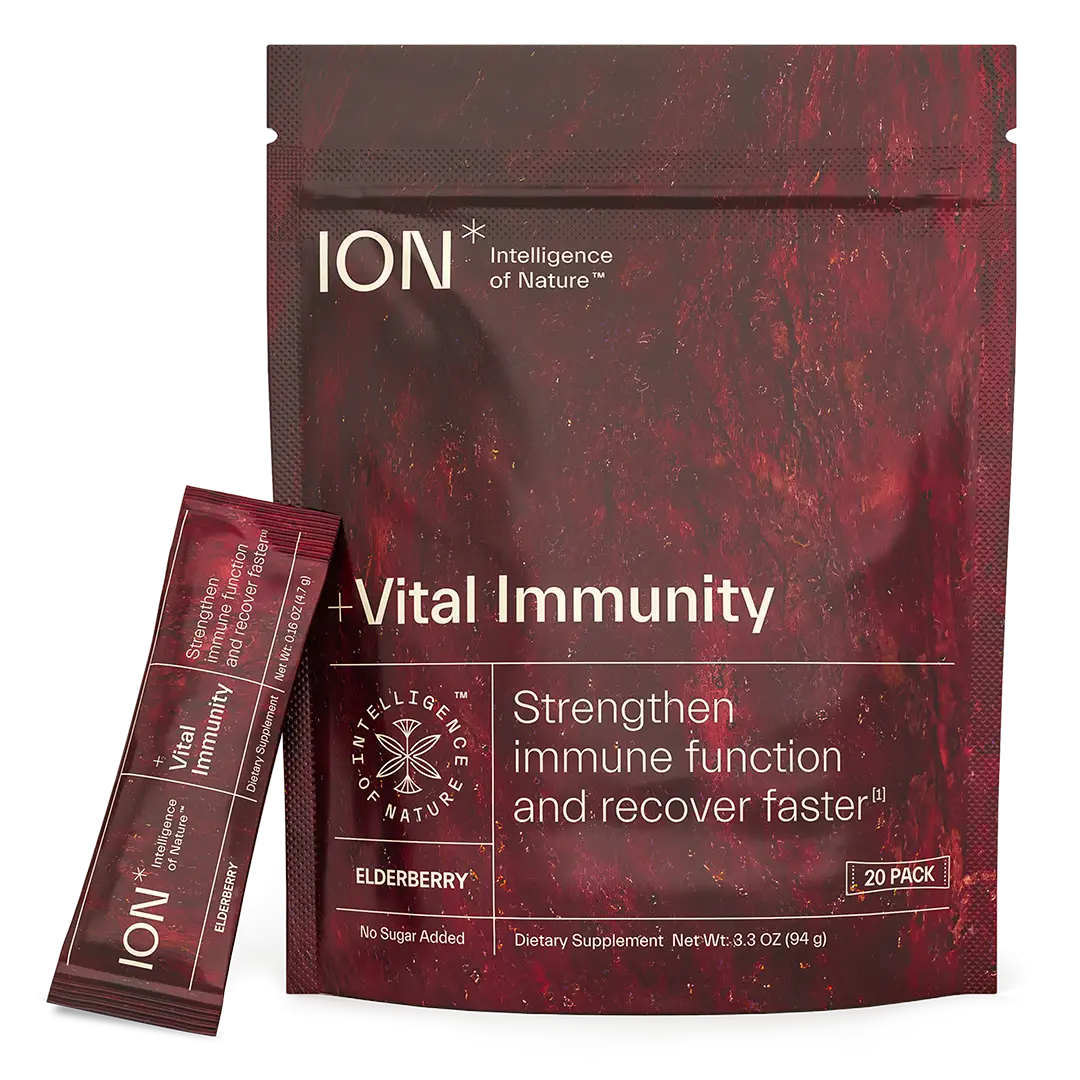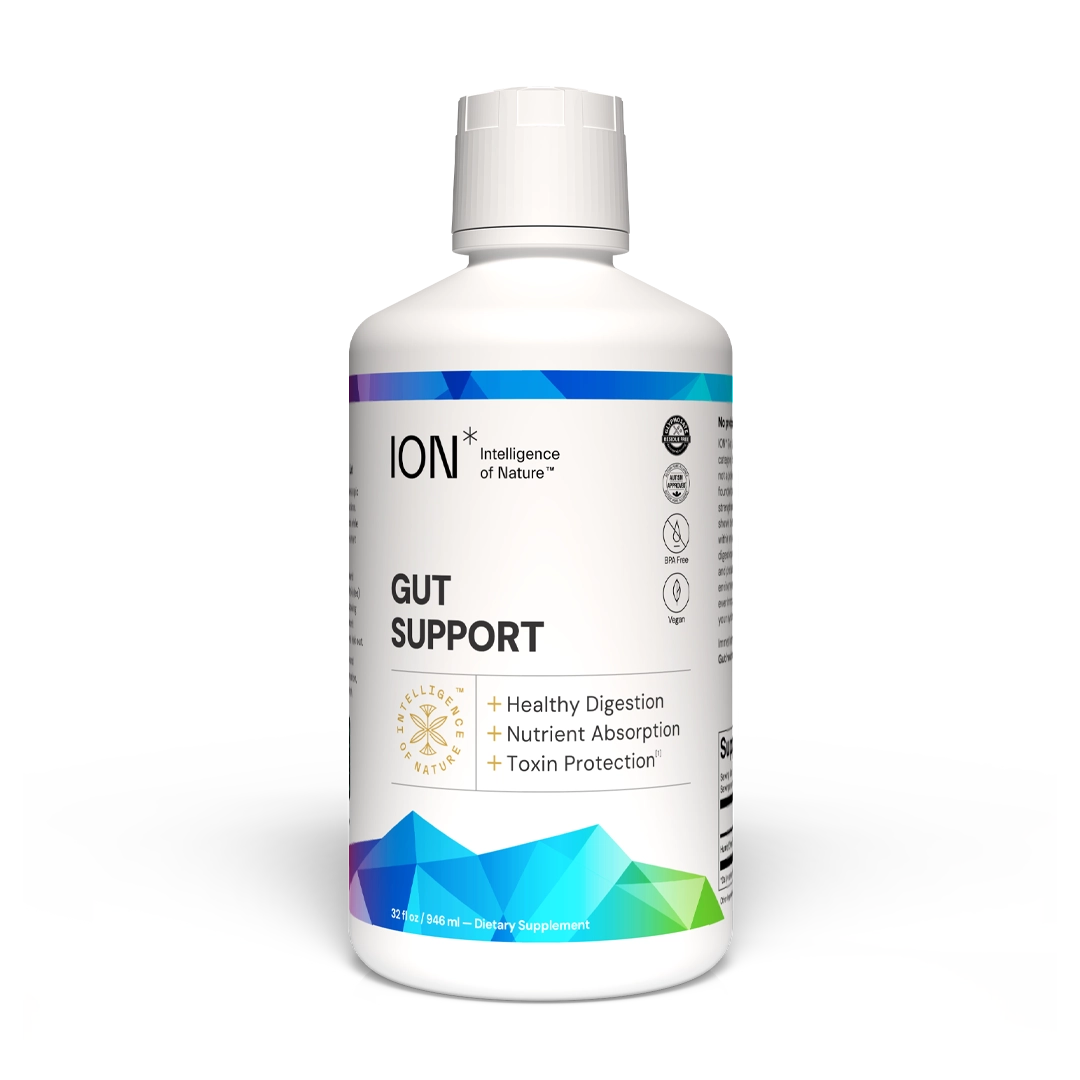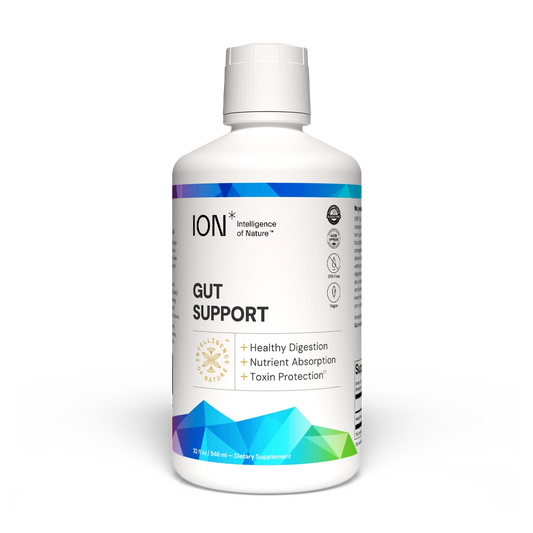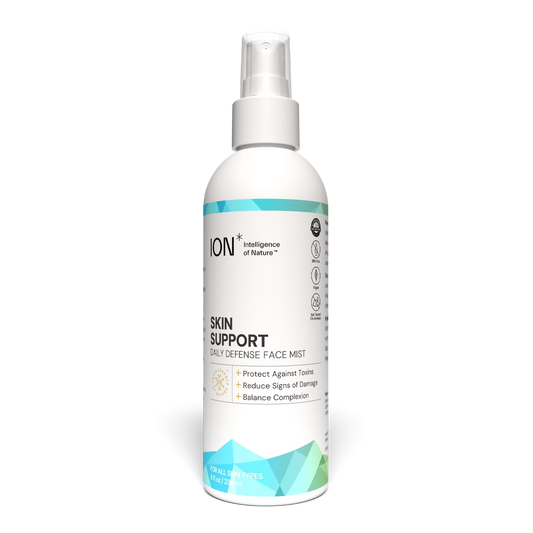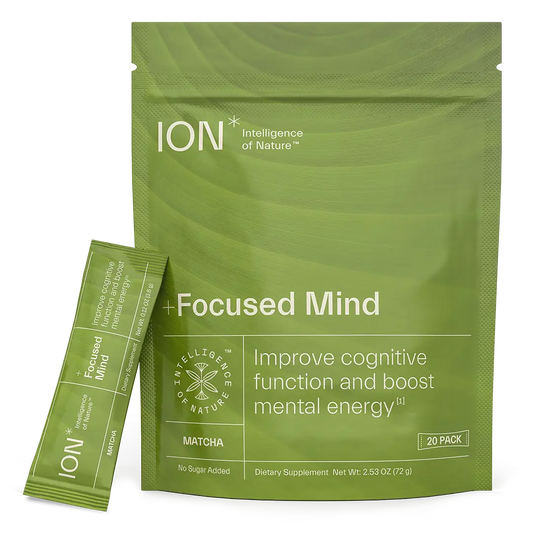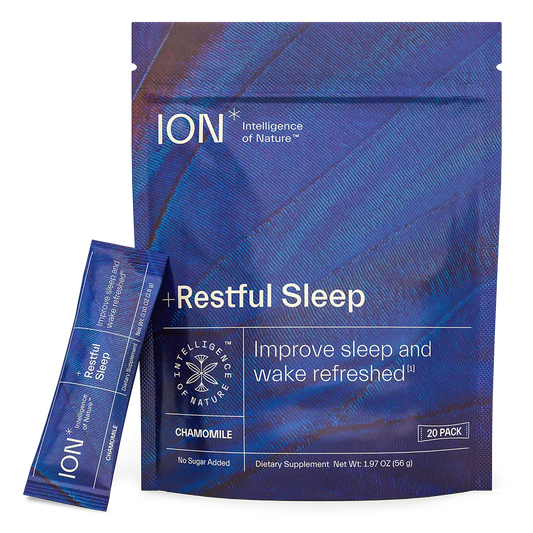As concerns over the health and ecological impacts of herbicides and pesticides mount, active ingredients like glyphosate face increased scrutiny, and for good reasons.
Most of us can agree that exposure to such chemicals is bad for our health. But in what ways they’re bad is extremely alarming when you look at the bigger picture.
Because glyphosate herbicides are the most widely used around the globe,[1] it’s important we understand what it actually is, how it works, and the history behind how it’s discreetly poisoning major crop systems that make up the countless foods we find at the grocery store.
What Exactly is Glyphosate?
Using a nomenclature like big pharma, glyphosate is a popular herbicide that’s widely used in the agricultural industry for its effectiveness in managing invasive and noxious weeds. It's particularly present in the mass production of corn, cotton, soybeans, and cereal grains, among a plethora of other uses.
Glyphosate has become the subject of numerous studies and debates due to its potential dangers to human health and the environment. But despite being widely used, only a few studies have evaluated the extent and amount of human exposure to glyphosate.[2] Sure, this chemical compound effectively controls weeds in agricultural settings. While this might seem advantageous to farmers, the widespread use of glyphosate raises serious concerns about its impact on our well-being.
Chemical Properties of Glyphosate
For the science-inclined, glyphosate is a broad-spectrum herbicide consisting of an organophosphorus compound with strong chelating properties – or selective bonding abilities. It’s chemically known as a phosphonic acid and a glycine derivative, so it can bind tightly to various metal ions like calcium, magnesium, manganese, copper, and zinc – all essential nutrients for plants' growth.
The ability of glyphosate formulations to cling to these vital elements contributes significantly towards their effectiveness as weed killers while also raising questions about their influence on soil fertility. While it works on plants, based on its chemical makeup, exposure to the glyphosate compound can cause irritation of the skin, gastrointestinal tract, and respiratory tract, as well as symptoms like convulsions and even coma.[3]
Common Uses of Glyphosate
While food production remains a priority concern surrounding glyphosate’s widespread use, the compound is commonly applied across a range of uses.
- Agriculture: Farmers worldwide use glyphosate-based herbicides extensively for controlling weeds in crops that are genetically modified specifically for resistance against this chemical agent.
- Lawn & Garden Maintenance: Homeowners often apply glyphosate-containing products like Roundup® for eliminating unwanted vegetation around residential areas or gardens without realizing possible consequences related to high concentrations of glyphosate residues left behind after application.
- Roadside Management: Local governments may employ these chemicals along roadsides, railways, power lines, and other public spaces to keep them clear of invasive plant species. However, environmental risks posed by such practices need careful consideration too, especially considering long-term effects such as biodiversity loss, soil degradation, and water contamination, among others.[4]
Contrary to its potential health risks, glyphosate remains a widely used chemical in modern agriculture, and understanding the implications of its use can help us make informed decisions.
The History of Glyphosate and Why It's Used
Back in the 1970s, Monsanto introduced glyphosate to the world as a revolutionary weed control solution. This chemical quickly gained popularity among farmers worldwide for its ability to eliminate pesky weeds without harming crops. But how did this controversial chemical become so widely used?
The story begins with John E. Franz, a chemist at Monsanto who discovered that glyphosate could be used as a potent herbicide. In 1974, Monsanto released its glyphosate-based herbicide under the brand name Roundup which quickly became one of the most widely used weed killers around the world.
Farmers were quick to adopt glyphosate-based herbicides due to their effectiveness against various types of weeds and ease of use. Moreover, with the introduction of genetically modified crops resistant to glyphosate, its usage skyrocketed even further.
No doubt, glyphosate has been hailed as a game-changer in agriculture for increasing crop yields while reducing labor costs associated with manual weeding.[5] However, concerns about potential health risks have emerged over time due to increased exposure to widespread use and glyphosate residues found in certain foods.[6] As such, it is essential to understand both sides of this coin when considering our relationship with this powerful chemical.
It's no secret that companies like Monsanto invest millions in special interest lobbying to suffocate the negative sentiment about its glyphosate products despite conflicting health reports. The company has even gone as far as distorting legitimate science in the interest of its own profits, resulting in private research misconduct, manipulating the regulatory process, and orchestrating campaigns to retract science articles.[7]
The outcome: over 100,000 lawsuits filed against Monsanto and nearly $10 billion in payouts as of May 2022, largely all centered around its cancer-causing product Roundup. [8] Now owned by Bayer, let's just say the company’s legal team stays busy.
How Does Glyphosate Work?
Glyphosate works by targeting an enzyme called 5-enolpyruvylshikimate-3-phosphate (EPSP) synthase which is necessary for plants to make certain amino acids that are vital for their growth and reproduction. This inhibition prevents plants from producing three vital amino acids - tryptophan, phenylalanine, and tyrosine - leading to their eventual death.
Another fundamental aspect of glyphosate is its selectivity towards different plant species. While it's true that glyphosate can affect most plants indiscriminately when applied directly, modern agriculture has found ways around this issue by developing genetically modified crops resistant to these herbicides - often referred to as "Roundup Ready" crops. These GMOs allow farmers to apply glyphosate liberally without harming their valuable crop yields while effectively controlling weeds.[9]
The supporting narrative behind this mechanism is that animals and humans don't have this particular EPSP enzyme; thus claims made by the EPA stating that glyphosate is “not likely” to be carcinogenic to humans. However, based on what we know about glyphosate's link to cancer risks,[10] among other health concerns, raises high caution about the potential risks associated with long-term exposure or high concentrations of glyphosate residues.
Dangers of Glyphosate
As glyphosate has become a staple in modern agriculture, concerns about its potential dangers have grown. From human health risks to ecological hazards, the dark side of this widely-used herbicide is worth exploring.
Side Effects and Human Health Risks
Contrary to the EPAs claims, the International Agency for Research on Cancer (IARC) classified glyphosate as a "probable human carcinogen", raising questions about its safety and overarching narrative. Studies have linked glyphosate exposure to various health issues, such as kidney disease and reproductive problems. [11, 12] Yet, further inquiry is necessary to gain a better comprehension of the possible dangers.
Environmental Risks
Glyphosate use can have serious environmental repercussions, from water contamination to soil degradation and beyond. The widespread use of glyphosate-based herbicides can lead to water contamination and soil degradation, which in turn impacts ecosystems and biodiversity. Taking into account the potential long-term impacts on our environment, we must not underestimate the severity of glyphosate's effects.
Leaky Gut Syndrome and Glyphosate's Connection
There's growing evidence that suggests glyphosate's connection to a number of digestive problems, in particular, a link between leaky gut syndrome and glyphosate exposure. Leaky gut occurs when the lining of your intestines becomes damaged, allowing toxins and bacteria into your bloodstream - an unwelcome situation for your overall health. Some researchers believe that glyphosate in food could contribute to this condition. [13]
Given its potential for causing serious health and environmental risks, it is essential to be cognizant of the signs and symptoms associated with both high and low levels of exposure to glyphosate, especially over long periods of time.
Signs & Symptoms of Glyphosate Exposure
Knowing the signs and symptoms of glyphosate exposure is vital if you suspect that you may have been exposed, either acutely at high levels or chronically over time low levels. While glyphosate exposure can vary from person to person, there are some common physical manifestations that may raise serious red flags.
- Skin irritation: Rashes or itching after contact with plants treated with glyphosate-based herbicides may signal an allergic reaction or sensitivity.
- Gastrointestinal distress: Nausea, vomiting, diarrhea, and abdominal pain have been reported in cases of high-level exposure or ingestion of glyphosate formulations.
- Fatigue: Feeling unusually tired without any apparent reason could be a sign your body is trying to cope with the presence of this chemical compound.
- Headaches & dizziness: These neurological symptoms may occur as a result of exposure to higher concentrations of glyphosate in certain situations.
- Respiratory issues: Breathing difficulties or coughing might suggest the inhalation of airborne particles containing traces of these chemicals during spraying activities.
- Depression, anxiety, and other mental health problems: Studies have shown the toxic effects of glyphosate on the body’s nervous system, particularly in deregulating signaling pathways involved in cell development and inducing oxidative stress, neuroinflammation, and mitochondrial dysfunction. [14]
Beyond these immediate physical effects, long-term consequences such as kidney disease have also been linked to chronic low-dose exposures. If you suspect that you're experiencing any adverse reactions due to glyphosate concentrations present within your environment, it's crucial not only for your health but also for others around you to take necessary precautions and consult a healthcare professional for guidance.
Foods High in Glyphosate
Given the widespread use of the herbicide, it's become difficult to track the sheer volume of glyphosate-laden foods. Dry crops like corn, oats, soy, and grains (particularly wheat) are some of the most common foods containing glyphosate. But even legumes (like chickpeas, black beans, and lentils), oil seeds, and some fruits and vegetables are ridden with the chemical compound.
While wheat gluten gets the blame as the main culprit for gastrointestinal disorders, tests by the Canadian Food Inspection Agency found 80-90% of popular wheat-based products – pastas, crackers, breads, cereals, etc. – contaminated with gut-destroying glyphosate. [15]
Products Containing the Highest Glyphosate Levels
In 2019, the Environmental Working Group (EWG) batch-tested several popular food products for glyphosate, focusing on oat-based breakfast cereals, snack bars, oatmeals, and granolas from the brands General Mills and Quaker. The children’s health benchmark set by the EWG is 160 parts per billion (ppb). Of the products tested, sixteen of them had alarmingly high glyphosate levels. [16] These included:
- Honey Nut Cheerios Medley Crunch - 830 ppb
- Nature Valley Crunchy Granola Bars, Maple Brown Sugar - 566 ppb
- Nature Valley Granola Cups, Almond Butter - 529 ppb
- Chocolate Peanut Butter Cheerios - 400 ppb
- Nature Valley Baked Oat Bites - 389 ppb
- Nature Valley Crunchy Granola Bars, Oats and Honey - 320 ppb
- Nature Valley Crunchy Granola Bars, Peanut Butter - 312 ppb
- Nature Valley Granola Cups, Peanut Butter Chocolate - 297 ppb
- Nature Valley Fruit & Nut Chewy Trail Mix Granola Bars, Dark Chocolate Cherry - 275 ppb
- Nature Valley Granola Protein Oats n Dark Chocolate - 261 ppb
- Multi Grain Cheerios - 216 ppb
- Nature Valley Soft-Baked Oatmeal Squares, Blueberry - 206 ppb
- Fiber One Oatmeal Raisin Soft-Baked Cookies - 204 ppb
- Nature Valley Granola Peanut Butter Creamy & Crunchy - 198 ppb
- Nature Valley Biscuits with Almond Butter - 194 ppb
In 2022, The Detox Project conducted a third-party glyphosate residue test in California, which examined various bread, grains, and other dry crop foods. The report, aptly titled "The Poison in our Daily Bread," highlighted five particular food products with high contamination levels:
- 100% whole wheat bread from Village Hearth - 1,150 ppb
- Whole wheat sandwich bread from Whole Foods Market 365 - 1,040 ppb
- Chickpeas from Great Value - 889 ppb
- 100% whole wheat bread from Pepperidge Farm - 587 ppb
- Quaker Oats from Quaker - 535 ppb
On the flip side, conscious consumers and nongovernmental organizations alike are stepping in to raise awareness about these problematic food products.
Contrary to the EPA's claims, the International Agency for Research on Cancer (a branch of the World Health Organization) put glyphosate in the category of “probably carcinogenic to humans.” And in 2017, California’s Office of Environmental Health Hazard Assessment assigned glyphosate as a known cancer-causing agent.
How to Mitigate Glyphosate Exposure
If, by now, you're reasonably concerned about the potential risks associated with glyphosate exposure, then it's high time to exercise due diligence in boycotting the brands and food products that contain it. Easier said than done, right?
There are ways to simplify glyphosate avoidance and practical steps you can take to minimize the likelihood of any adverse health effects stemming from exposure. By making informed food choices, you can protect yourself and your family from this controversial herbicide.
Opting for Organic and Non-GMO Products
One of the easiest ways to mitigate exposure to glyphosate residues is by choosing organic and non-genetically modified produce whenever possible. Certified organic and non-GMO farms do not use glyphosate-based herbicides, so their products have significantly lower glyphosate concentrations.
But even opting for organic is a band-aid solution that doesn't ensure full protection from glyphosate exposure. Because the herbicide easily travels from neighboring farms and agricultural sites, even organic farms aren't fully immune. But if you stick with small, local farmers (or better yet, your own organic garden), you can further minimize contact with the contaminant. Thankfully, organizations like Farmer’s Footprint are working to bring awareness to the harms of glyphosate while educating on the benefits, to both human and planetary health, of regenerative farming practices.
Avoiding High-Risk Products
Certain foods are more likely to contain high levels of glyphosate due to widespread agricultural use. Substitute products like quinoa, rice, buckwheat, or millet instead of non-organic soybeans, corn, wheat, and oats.
Processed foods found on the shelves of grocery stores – like your crackers, cookies, cereals, and breads – often contain ingredients derived from crops treated with glyphosate-based herbicides. Limit your consumption of processed snacks and ready-made meals in favor of whole foods prepared at home.
Beware of gardening products containing glyphosate and avoid contact with Roundup and anything remotely similar to it. If you must use weed control products, choose natural methods or look for eco-friendly alternatives when maintaining your yard.
Staying Informed on New Findings
If you're truly passionate about this topic and want to educate yourself on what foods to avoid, stay up-to-date on the latest research related to glyphosate and other environmental toxins affecting human health by following reputable news sources and scientific journals. The Detox Project, EWG, Friends of the Earth, and Center of Food Safety are some of the more notable players.
Staying informed will help you make smart decisions about your lifestyle choices, reducing the risk of glyphosate exposure and its potential consequences. And by avoiding high-risk products, we can take steps to mitigate our exposure to glyphosate.
Strengthening the Integrity of the Gut
Not only can glyphosate exposure lead to alterations in the gut microbiota, but it can disrupt gut health by loosening the tight junctions in the intestinal lining, which can lead to a range of health issues, namely leaky gut syndrome.
ION* Gut Support is a product that is scientifically proven to help counteract glyphosate exposure in the gut by strengthening tight junctions in the intestinal lining, which can help support overall gut health and the many associated functions related to immunity, gut-brain health, allergies, and more.
Frequently Asked Questions about Glyphosate
There are a lot of questions to unpack about glyphosate. These are some of the most frequently asked.
Is Glyphosate Outlawed in America?
Nope. Glyphosate is not currently banned in the United States; however, several cities across America have restricted or prohibited its use within their jurisdictions due to growing concerns about potential risks associated with exposure.
What is Glyphosate Used For?
Glyphosate is primarily used as an herbicide for controlling weeds that compete with crops for resources like water and nutrients. It's especially popular among farmers because it effectively kills weeds without damaging non-target plants when applied correctly.
What is Glyphosate Found In?
Glyphosate is commonly found in agricultural products treated with this herbicide, such as corn, soybean, wheat, cotton, sugar beets, and oil seeds like canola. In turn, it can make its way into processed foods like cereals, breads, snacks, and even honey.
Is Glyphosate the Same as Roundup?
Yes, essentially. Monsanto's weed killer, Roundup, contains glyphosate as the active main ingredient. However, Roundup also includes other components and additives which may add to its general toxicity.
Why is Glyphosate Harmful to Humans?
Glyphosate may be harmful to humans because it disrupts the balance of beneficial bacteria in our gut microbiome, potentially leading to leaky gut syndrome.[17] Pregnant women exposed to high levels of glyphosate are at risk for adverse birth outcomes.[18] Glyphosate exposure can also cause a range of harmful symptoms, from skin irritation and respiratory issues to digestive and mental health problems.
Is Leaky Gut Harmful to Humans?
When the intestinal lining becomes damaged from an over-exposure to glyphosate and other problematic substances, the result is a condition known as leaky gut syndrome. This condition can lead to undigested food particles, toxins, and bacteria entering your bloodstream, which is dangerously harmful if not addressed. Studies have linked leaky gut with numerous health issues such as autoimmune diseases, chronic fatigue syndrome, allergies, asthma, acne, and more. [19]
The underlying reason why glyphosate is so damaging is the havoc it wreaks on your gut health. And if you're not already aware, gut health is highly connected to the rest of the body’s health. While avoiding glyphosate-ridden food is the best defense, ION* Gut Support is a restorative solution that can repair the intestine’s tight junctions that glyphosate chips away at over time. Learn more about ION* and other supportive health products.
Scientific References
- https://www.sciencedirect.com/topics/earth-and-planetary-sciences/glyphosate
- https://ehjournal.biomedcentral.com/articles/10.1186/s12940-018-0435-5
- https://pubchem.ncbi.nlm.nih.gov/compound/Glyphosate#section=Health-Hazards
- https://www.ncbi.nlm.nih.gov/pmc/articles/PMC5486281
- https://www.researchgate.net/figure/Cost-of-weed-control-as-affected-by-glyphosate-rates-and-labour-requirements_tbl4_334697454
- https://pubmed.ncbi.nlm.nih.gov/29117584/
- https://www.sciencedirect.com/science/article/abs/pii/S0048733321000925
- https://www.wisnerbaum.com/toxic-tort-law/monsanto-roundup-lawsuit/
- https://www.ers.usda.gov/data-products/adoption-of-genetically-engineered-crops-in-the-u-s/
- https://www.sciencedirect.com/science/article/abs/pii/S1383574218300887
- https://www.ncbi.nlm.nih.gov/pmc/articles/PMC6695815/
- https://www.ncbi.nlm.nih.gov/pmc/articles/PMC8293380/
- https://www.ncbi.nlm.nih.gov/pmc/articles/PMC3945755/
- https://www.ncbi.nlm.nih.gov/pmc/articles/PMC9101768/
- https://www.ewg.org/news-insights/news/glyphosate-contamination-food-goes-far-beyond-oat-products
- https://www.ewg.org/childrenshealth/monsanto-weedkiller-still-contaminates-foods-marketed-to-children
- https://www.ncbi.nlm.nih.gov/pmc/articles/PMC9146949/
- https://ehjournal.biomedcentral.com/articles/10.1186/s12940-022-00906-3
- https://www.ncbi.nlm.nih.gov/pmc/articles/PMC6790068/

